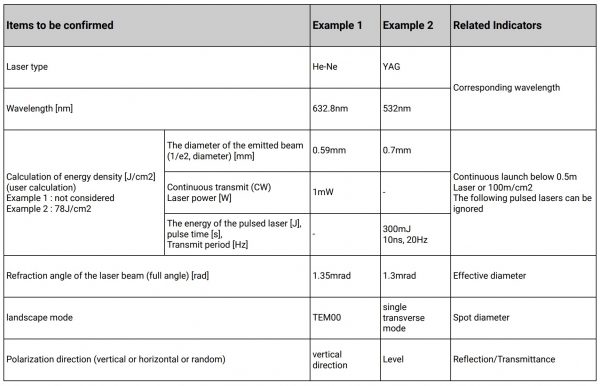Selection of optical components
This article introduces the selection of optical components from the aspects of optical path diagram, laser technical indicators, optical system grade, etc.
Optical Path
When establishing an optical experimental device, or an optical system, the optical path diagram should first be prepared according to the optical principle.
The technical requirements of each optical element in the optical path diagram shall be confirmed one by one and recorded in the optical path diagram.
According to these technical requirements, it is the best to choose optical components, but there are many optical components with similar performance in the product catalog, which one is better to choose, sometimes it is hesitant.
Here, we introduce 2 important factors to consider when choosing optics.
image
Laser Specifications
When choosing optical components, the first thing to do is to clarify the technical indicators of the “light” used. There are many types of light sources.
There are lasers, light-emitting diodes, halogen lamps, metal halide lamps and other light sources in this catalog. There are many wavelengths of laser light sources, and the types of optical components used vary depending on the wavelength. In addition to wavelength, there are several other factors that determine the specification of an optical component.

For the above technical indicators, if there is any unclear place, please check the manufacturer’s name and product model of the laser, and confirm with the manufacturer.
Compare the technical indicators of the optical components and the technical indicators of the laser in the product catalog, and select the optical components that meet the technical requirements such as laser damage threshold and polarization direction.
class of optical system
It is important to know exactly what level of accuracy is required for the optics. When the specific accuracy grade requirements are not clear, the grades can be divided according to the application.
The lighting system level has no special requirements for accuracy, and its performance should be given priority.
The simple optical system grade not only needs to exert its performance, but also needs to properly consider the problems of accuracy and error.
The interferometer grade needs to have accuracy requirements under the specified usage method.
| wdt_ID | Grade | Surface Accuracy | Scratches - Dogs | Product Examples | Application |
|---|---|---|---|---|---|
| 1 | Lighting system class | around λ | around 60 - 40 | Biconvex lens Aspherical Lens (AGL) | Microscope Illumination System (Illumination beam of detector, etc.) |
| 2 | Simple Optical System Class | λ/4 or less | Below 40-20 | Plano-convex lens Achromatic lens Aluminum Coating* Dielectric Coating Mirrors | Various imaging systems Small Aperture Interferometer |
| 3 | Interferometer class | λ/10 or less | Below 20-10 | Mirrors to ensure surface accuracy Femtosecond high power mirror condenser lens | Interferometer for observing wavefronts Laser processing device High Resolution Optical Experiment |
※There are also mirrors with high surface accuracy (TFAQ, TFAN-**-20) for the aluminum-coated mirrors.
The above ratings are only a benchmark and may vary slightly depending on the product and material.
Please refer to the selection guide for specific product selection, as well as selection guides and application materials such as “Beam Expander Method” and “How to Use Polarizers”.
If there is still something unclear, please contact the sales department. When inquiring, please inform us about the technical indicators and usage situations of the laser first, so that we can reply more quickly and accurately based on the information you provide.
